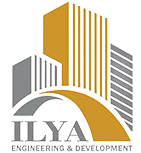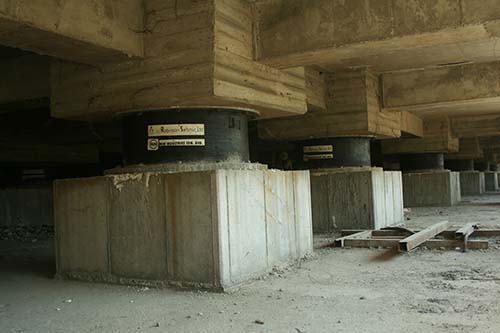Living in an area prone to earthquakes can be both exhilarating and nerve-wracking. While we may marvel at the natural beauty and geological wonders of such regions, the looming threat of seismic activity is a constant reminder of the importance of preparedness. In places like California, where the San Andreas Fault lines the landscape, ensuring that homes are equipped to withstand earthquakes is paramount. This is where seismic retrofitting comes into play.
What is Seismic Retrofitting?
Seismic retrofitting is the process of reinforcing a structure to make it more resistant to seismic activity, such as earthquakes. It involves assessing the vulnerabilities of a building and implementing measures to improve its structural integrity and reduce the risk of damage or collapse during an earthquake.
Why is Seismic Retrofitting Important?
The devastating consequences of earthquakes are well-documented, with loss of life, injuries, and property damage being common outcomes. In many cases, buildings that are not properly retrofitted are particularly susceptible to collapse during seismic events, putting occupants at grave risk. By retrofitting homes and buildings, we can mitigate these risks and create safer environments for ourselves and our communities.
Signs Your Home May Need Seismic Retrofitting:
- Age of the Structure: Older homes, especially those built before modern building codes were established, are more likely to require seismic retrofitting. These structures may lack the necessary reinforcements to withstand the forces generated by earthquakes.
- Visible Structural Damage: Cracks in the foundation, walls, or ceiling, as well as uneven floors or gaps around doors and windows, could indicate underlying structural issues that need to be addressed through retrofitting.
- Weak Connections: Buildings with weak connections between the foundation, walls, and roof are at greater risk of collapse during an earthquake. Retrofitting can strengthen these connections and improve overall structural stability.
- Unreinforced Masonry: Homes constructed with unreinforced masonry, such as brick or stone, are particularly vulnerable to seismic activity. Retrofitting techniques, such as adding steel reinforcement or installing a shear wall, can help mitigate the risks associated with unreinforced masonry.
- Location: Homes located near fault lines or in areas with a history of seismic activity are at higher risk of earthquake damage and may require retrofitting to improve their resilience.
Benefits of Seismic Retrofitting:
- Enhanced Safety: Retrofitting improves the structural integrity of a building, reducing the risk of collapse and minimizing the potential for injuries or fatalities during an earthquake.
- Protection of Property: Retrofitting helps protect your home and belongings from damage, potentially saving you thousands of dollars in repair and replacement costs.
- Peace of Mind: Knowing that your home is equipped to withstand seismic activity can provide peace of mind for you and your family, allowing you to focus on other aspects of earthquake preparedness.
- Compliance with Building Codes: In many earthquake-prone regions, seismic retrofitting may be required by local building codes or ordinances. Retrofitting ensures that your home meets these requirements and remains in compliance with current regulations.
Conclusion:
In the face of unpredictable seismic events, proactive measures such as seismic retrofitting are essential for safeguarding homes and protecting lives. By understanding the importance of retrofitting, recognizing the signs that your home may need reinforcement, and taking action to address any vulnerabilities, you can help ensure that your home is ready for the “Big One” and whatever else Mother Nature may have in store. Remember, when it comes to seismic safety, it’s always better to be prepared than to be caught off guard.


Hi there, just became aware of your blog through Google, and found that it is truly informative. I’m going to watch out for brussels. I will be grateful if you continue this in future. Lots of people will be benefited from your writing. Cheers!
Some genuinely excellent articles on this site, appreciate it for contribution.
Hello, i read your blog occasionally and i own a similar one and i was just wondering if you get a lot of spam comments? If so how do you reduce it, any plugin or anything you can recommend? I get so much lately it’s driving me insane so any support is very much appreciated.
It is truly a great and helpful piece of information. I am glad that you just shared this useful information with us. Please stay us informed like this. Thanks for sharing.
You really make it appear so easy along with your presentation but I in finding this topic to be actually something that I feel I would by no means understand. It seems too complicated and extremely wide for me. I am having a look forward for your subsequent publish, I¦ll attempt to get the cling of it!
I got what you mean , thankyou for putting up.Woh I am delighted to find this website through google. “Do not be too timid and squeamish about your actions. All life is an experiment.” by Ralph Waldo Emerson.
Wonderful goods from you, man. I have be aware your stuff previous to and you’re just extremely great. I really like what you have got here, really like what you’re stating and the way during which you assert it. You make it enjoyable and you continue to take care of to stay it smart. I can’t wait to learn much more from you. This is really a great site.
Somebody essentially help to make seriously posts I would state. This is the very first time I frequented your website page and thus far? I surprised with the research you made to create this particular publish extraordinary. Wonderful job!
I like the efforts you have put in this, regards for all the great content.
Wonderful beat ! I would like to apprentice while you amend your website, how can i subscribe for a blog web site? The account aided me a acceptable deal. I were tiny bit familiar of this your broadcast offered vivid transparent concept
Thanx for the effort, keep up the good work Great work, I am going to start a small Blog Engine course work using your site I hope you enjoy blogging with the popular BlogEngine.net.Thethoughts you express are really awesome. Hope you will right some more posts.